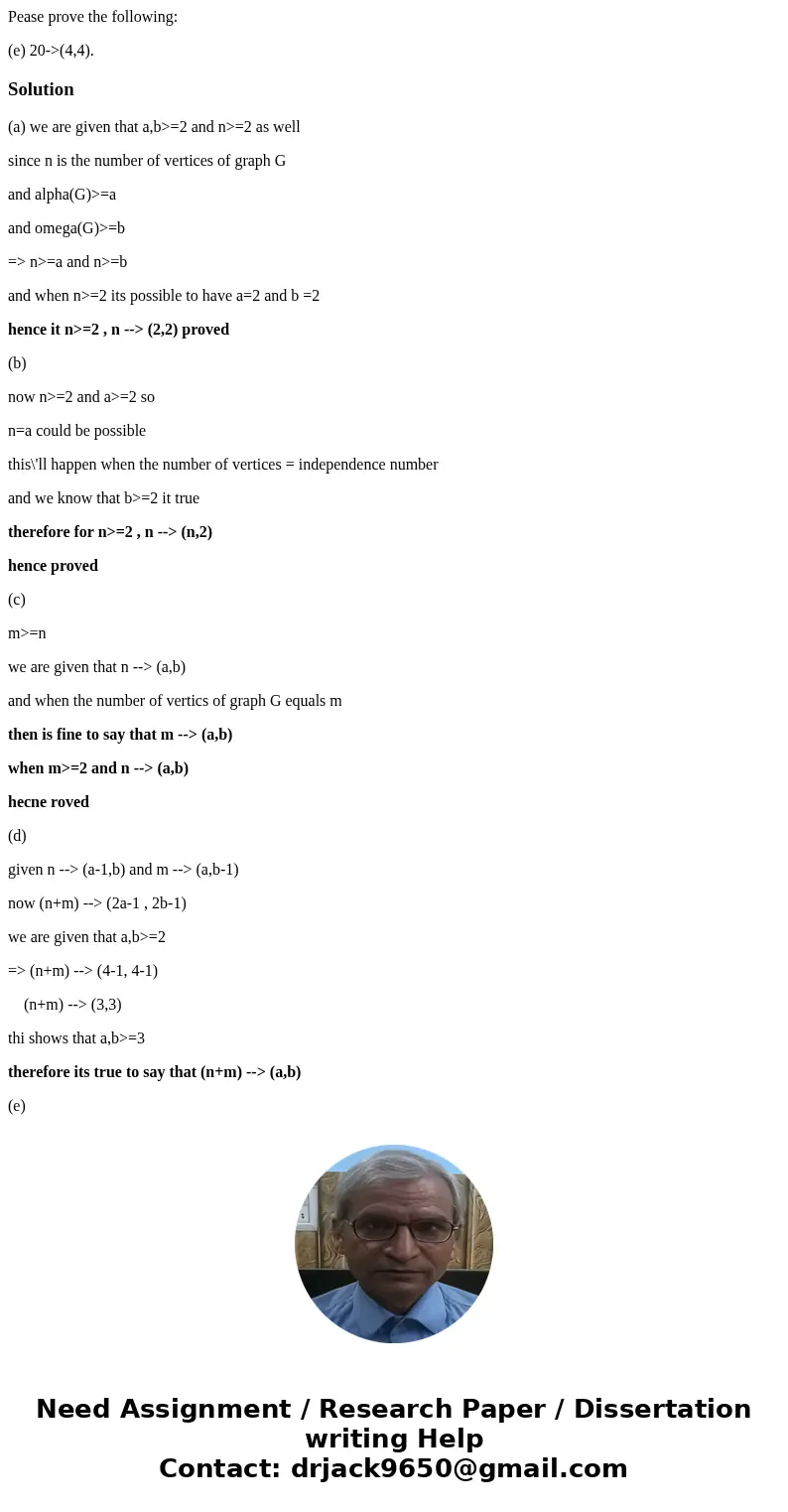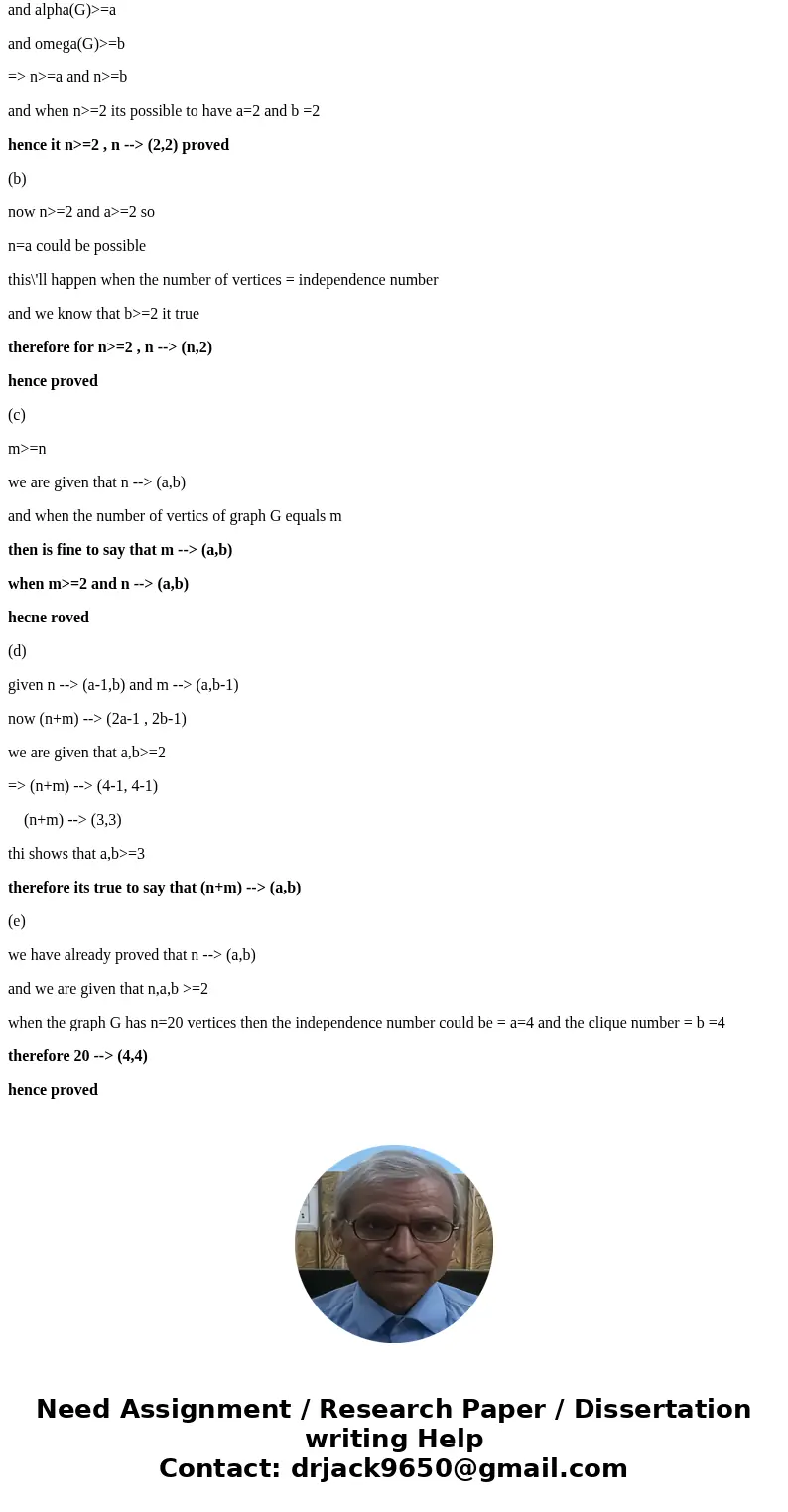Pease prove the following e 2044Solutiona we are given that
Pease prove the following:
(e) 20->(4,4).
Solution
(a) we are given that a,b>=2 and n>=2 as well
since n is the number of vertices of graph G
and alpha(G)>=a
and omega(G)>=b
=> n>=a and n>=b
and when n>=2 its possible to have a=2 and b =2
hence it n>=2 , n --> (2,2) proved
(b)
now n>=2 and a>=2 so
n=a could be possible
this\'ll happen when the number of vertices = independence number
and we know that b>=2 it true
therefore for n>=2 , n --> (n,2)
hence proved
(c)
m>=n
we are given that n --> (a,b)
and when the number of vertics of graph G equals m
then is fine to say that m --> (a,b)
when m>=2 and n --> (a,b)
hecne roved
(d)
given n --> (a-1,b) and m --> (a,b-1)
now (n+m) --> (2a-1 , 2b-1)
we are given that a,b>=2
=> (n+m) --> (4-1, 4-1)
(n+m) --> (3,3)
thi shows that a,b>=3
therefore its true to say that (n+m) --> (a,b)
(e)
we have already proved that n --> (a,b)
and we are given that n,a,b >=2
when the graph G has n=20 vertices then the independence number could be = a=4 and the clique number = b =4
therefore 20 --> (4,4)
hence proved


 Homework Sourse
Homework Sourse